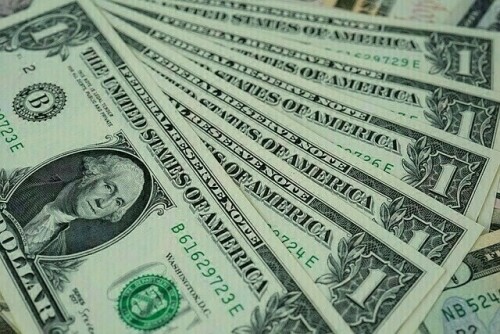Pakistani Rupee’s Stability Amidst Global Uncertainty
During Thursday’s interbank market opening, the Pakistani rupee exhibited remarkable stability against the US dollar, experiencing a slight appreciation of 0.01%.
At precisely 10am, the local currency was recorded at 283.53, reflecting a minor increase of Re0.02 relative to the US currency.
The preceding day, on Wednesday, the rupee concluded trading at 283.55.
The US dollar saw strengthening internationally on Thursday, bolstered by its perceived safety amidst growing concerns of a wider Middle Eastern conflict and the potential involvement of the United States. Concurrently, investors carefully considered the cautious statements regarding inflation from Federal Reserve Chair Jerome Powell.
After a subdued beginning during Asian trading hours, the US dollar saw broad gains, placing downward pressure on currencies sensitive to risk. This movement followed reports indicating US officials are making preparations for the possibility of strikes against Iran in the near future.
The Australian dollar experienced a decline of as much as 0.5%, ultimately settling lower by 0.3% at $0.6489. Similarly, the New Zealand dollar decreased by 0.5%, reaching $0.5998. Emerging market currencies also faced challenges, with the South Korean won weakening by 1%.
Escalating geopolitical tensions have contributed to a resurgence in the dollar’s safe-haven appeal, gaining ground against currencies such as the yen, euro, and Swiss franc.
Iran and Israel exchanged additional aerial attacks on Thursday, marking the seventh day of escalating conflict. Growing apprehension regarding potential U.S. intervention has also surfaced, particularly as President Donald Trump has kept the international community guessing about possible U.S. participation in actions against Iranian nuclear sites.
These hostilities have amplified fears of broader instability across the region, especially when considering the continuing repercussions of the Gaza conflict.
Oil prices, a significant indicator of currency relationships, declined on Thursday as investors hesitated to commit to new positions. This hesitation was influenced by President Donald Trump’s ambiguous signals concerning potential U.S. involvement in the Israel-Iran conflict, along with the Federal Reserve’s decision to maintain current interest rates.
Brent crude futures decreased by 20 cents, or 0.26%, to $76.5 a barrel by 0421 GMT, following a 0.3% gain in the prior session characterized by high volatility and a price decrease of as much as 2.7%.
US West Texas Intermediate crude for July experienced a decrease of 4 cents, or 0.05%, to $75.10 a barrel, after closing up 0.4% in the previous session during which prices had fallen by up to 2.4%.
The July contract concludes on Friday, with the more active August contract falling by 8 cents, or 0.11%, to $73.42 a barrel.
This information reflects an intra-day market update.



Comments (0)
No comments yet. Be the first to comment!
Leave a Comment